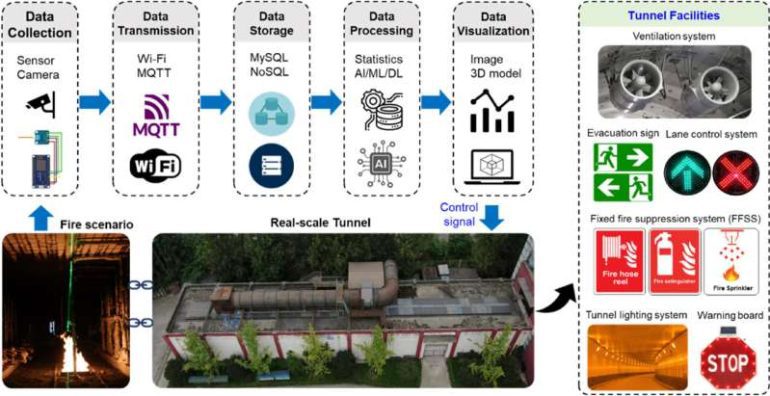- PolyU is leading innovation in smart firefighting and urban resilience.
- SureFire System uses AI and data networks for real-time hazard monitoring.
- Workshop drew 70+ experts to discuss fire safety and AI forecasting.
- Digital twin system enhances real-time fire risk assessment and prediction.
- System validated in large-scale fire tests; predicts scenarios with 90% accuracy.
- Collaboration with property managers to implement SureFire in various infrastructures.
- Smart Dynamic Exit signs developed by PolyU start-up reduce evacuation casualties.
- Ongoing development of autonomous firefighting robots positions Hong Kong as a smart city leader.
Main AI News:
The increase of high-rise urban developments has sharply increased the demand for advanced safety solutions, particularly firefighting. The Hong Kong Polytechnic University (PolyU) is leading the charge with innovative technologies to bolster urban resilience.
Prof. Asif Usmani and Dr. Huang Xinyan of PolyU recently hosted the 2nd International Smart Firefighting Workshop (SureFire 2024), part of the “SureFire: Smart Urban Resilience and Firefighting” project. Their work focuses on the SureFire System, which uses AI and complex data networks to monitor urban hazards in real-time, enabling proactive decision-making.
As global fire incidents in high-rise buildings increase, the workshop drew over 70 international experts to discuss topics like fire safety design and AI-based fire forecasting. Dr. Huang highlighted their efforts to develop a smart firefighting system through multidisciplinary research, leveraging the rapidly evolving cyber-physical landscape.
A significant breakthrough is their intelligent digital twin system, combining AIoT and computer vision for real-time fire risk assessment. This system can map risk zones before an incident and predict fire progression during emergencies, supporting firefighting and evacuation.
Validated through large-scale fire tests in Sichuan tunnels and at the Hong Kong Fire Services Department, the SureFire system accurately forecasts fire scenarios 1–3 minutes in advance, with over 90% accuracy. Dr. Huang believes this technology could be a standard in future buildings, enhancing public safety and emergency response.
Over the past five years, the PolyU SureFire team has made strides in intelligent fire safety solutions, with recent publications in Developments in the Built Environment and Safety Science highlighting their progress. They are collaborating with property managers in China and abroad to implement the SureFire system in metro stations, tunnels, and high-rise buildings.
One notable innovation is the Smart Dynamic Exit sign system, developed by PolyU start-up GABES. This system reduces casualties by guiding evacuations. Looking ahead, Dr. Huang’s team is developing autonomous firefighting robots, positioning Hong Kong as a leader in smart city technology.
Conclusion:
The advancements by PolyU in innovative firefighting technology signal a significant shift in the safety and emergency response market. The SureFire System’s ability to provide real-time monitoring, risk assessment, and predictive analytics will drive demand for integrated AI solutions in urban planning and infrastructure. This progress positions Hong Kong as a leader in smart city technology, potentially opening new markets for AI-driven safety systems globally. Companies in fire safety, urban development, and smart technologies should anticipate growing opportunities in these areas, driven by increasing urbanization and the need for resilient infrastructure.

